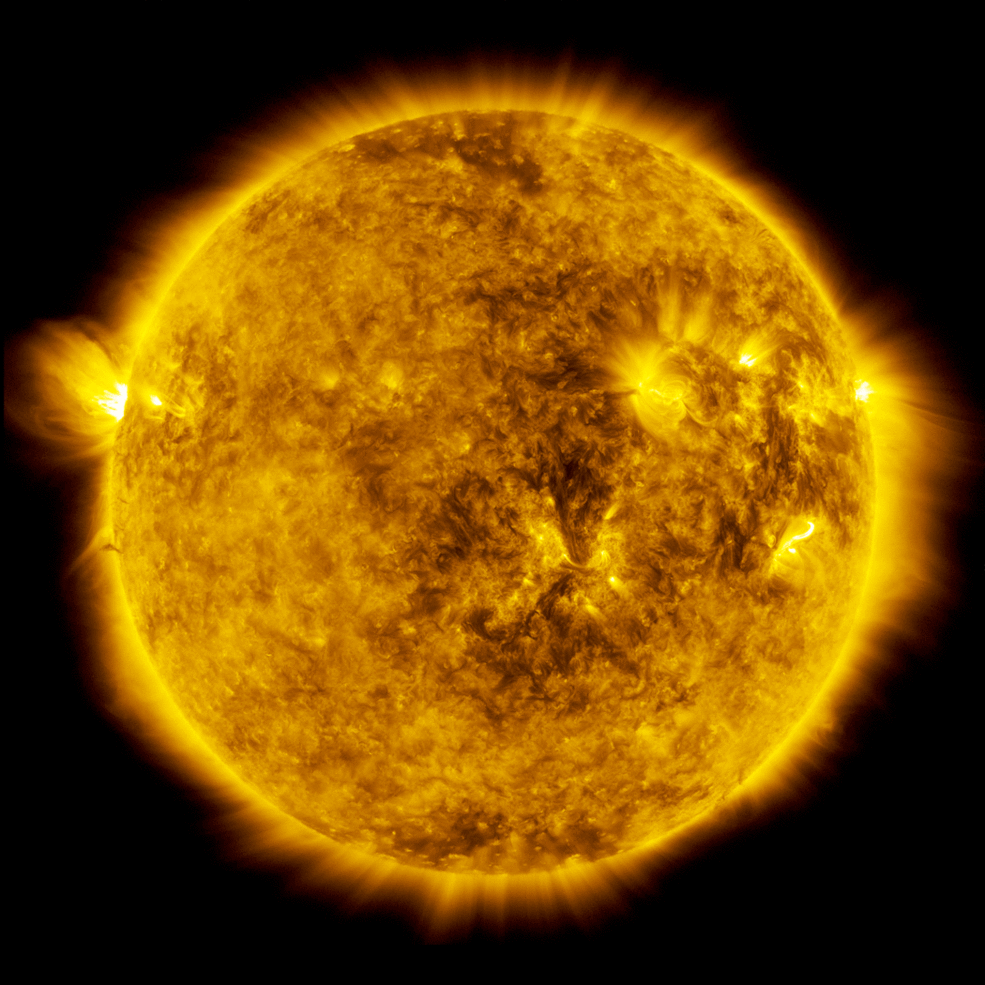The Magic of Coincidence: On the Solar Eclipse
Image Credit: Rick Fienberg, TravelQuest International and Wilderness Travel/NASA.
Predicting the future sounds like the power of a super hero. But in early Aztec and Babylonian cultures, priests held the knowledge to do just that. Take for example, the total solar eclipse. Priests received the wonder of their flock for being able to chart the skies—something we consider now a natural science. The trick of magic is knowing where the secret actually is—up a sleeve, in a hat, coming out of a scarf.
In the case of the total solar eclipse, the magic of coincidence mounts. It is not only that the moon enters the path of the sun. The relative size and position of the sun and the moon also matter. The moon is four hundred times smaller than the sun, but it floats four hundred times nearer to Earth. From a certain spot on our globe, the smaller moon can then entirely cover the larger sun to the viewer on Earth.
This is a coincidence in our notion of time and space. But in a few hundred million years, total solar eclipses will be over forever. The moon has been moving away from us at a rate of one and a half inches per year, since its birth four billion years ago. What we see in the sky the as the total eclipse will be but a memory, a chance encounter that can either change our perception of the world or simply pass us by.
How easy it must have been for early cultures to believe that the sun revolves around the Earth. Like early humans, we too experience our day as starting with sunrise and ending at sunset. But we know now the opposite is true, that the Earth revolves around the sun.
The sun rises in the morning and the moon appears at night, two fixed points of reality—daylight and moonlight. Sure as can be, the world must be divided by twos. But this perspective changes when you’re in space. An astronaut sees a whole new reality—a system with moving parts. From a space ship there are 16 sunrises in 24 hours.
We are a part of a solar system that is a part of the Milky Way. How grand and beautiful it feels to see the whole splay of stars in the sky from a rural area on a cloudless night. You know where you are. But hold on. We are part of a galaxy that is one of two trillion galaxies. I repeat, two trillion, so far and still counting. Put your mind around it. You cannot. It’s more than we can fully comprehend. Yet it does quicken our appreciation that whatever answers we have are partial answers to ever larger possibilities.
As you think about the solar eclipse, try to expand your mind. You can apply that same imaginative focus on the micro world as well. As the NASA artist Sergio Toporek reminds us:
“Consider that you can see less than 1% of the electromagnetic spectrum and hear less than 1% of the acoustic spectrum. As you read this, you are traveling at 220km/sec across the galaxy. 90% of the cells in your body carry their own microbial DNA and are not ‘you’. The atoms in your body are 99.99999999999% empty space and none of them are the ones you were born with, but they all originated in the belly of a star. Human beings have 46 chromosomes, 2 less than the common potato.”
Let it be a relief. Some other force is driving the train. Sit back and appreciate the view.
On May 25, 2017, NASA’s Solar Dynamics Observatory, or SDO, experienced a partial solar eclipse in space when it observed the moon passing in front of the sun. The lunar transit lasted about an hour, between 2:24 and 3:17 p.m. EDT, with the moon covering about 89 percent of the sun at the peak of its journey across the face of the sun. Credits: NASA’s Goddard Space Flight Center/SDO/Joy Ng, producer

